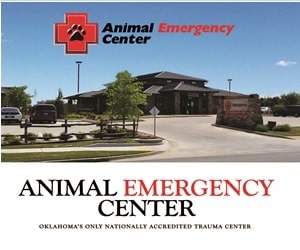Rough Road for Rabbits

WRITTEN BY: Kim Doner
I’ve had the honor of writing for TulsaPets for a couple of years now; the drive to share information, as well as a wildlife rehabber’s perspective, has inspired me for the subjects I’ve offered. For the most part, the darkest situations I’ve addressed have been coupled with warnings, insights, ideas for prevention and hope—the proverbial “light at the end of the tunnel.”
I want readers to have ways of dealing with animals that avoid tragic consequences; I want others to be more tolerant or appreciative of all animals in our lives. But, with this assignment, I’ve really struggled. Even with my Pollyanna personality, I fear the light here is very faint, and I’m not sure there’s an end to the tunnel.
On top of COVID-19 concerns and a plethora of cultural/political/historical crises, the lack of environmental health looms more than ever. Global indicators of potential disasters rise from the animal world in the forms of infestations, invasions and infections. Bear in mind, nearly all of these disasters are not due to animals interacting in their native environments. They are usually due to our interference: human ignorance coupled with some form of economic need or greed.
Invasive species are thriving everywhere in America: pythons populate the Everglades, killer hornets are moving through Washington state, feral hogs and cats abound—and all of these have steadily destroyed the health of native animals. It sucks.
And now, we have another victim. The rabbits of North America, cottontails, hares, pikas, swamp rabbits and more, are dying. A pandemic is spreading through human actions with diseased bunnies, and its dire promise will stress the environment even more.
Rabbit Hemorrhagic Disease Virus comes in three forms (I’m addressing RHDV2 here) and is highly contagious to lagomorphs (but not humans, so don’t panic). Originating through European and Chinese trade in the mid-1980s, the disease proved handy as Australia used it to control destructive rabbit populations in the 1990s. RHDV2 began to spread through domestic and wild European rabbits from that point and appeared in Canada’s domestic stock in 2018.
It was assumed to be a fairly exotic disease at that point; breeders and pet owners figured wild rabbits were immune. Wrong.
Perhaps some of you readers don’t know this, but there are plenty of heartless pet owners, who dump more than dogs and cats, as well as breeders and businesses with less than stellar practices. Beginning in March 2020, an unusual number of carcasses appeared in the U.S.; testing revealed this “Bunny Ebola” infecting cottontails, hares and more. Epidemiologists are tracking the disease, and the charts indicate it’s picking up steam in wild populations. One reason?
This virus is incredibly hardy.
Once an animal is infected, it can go one to nine days with no symptoms (depending on the exact strain and levels). Once symptoms start, RHDV can explode through the system and, within hours, end the bunny’s life with a terminal scream as it collapses into death. That’s the easy way. Many will experience a slow decline as organs shut down. Congestion in the eyes, nose and lungs drowns them; convulsions, paddling and mania ensue. Finally, a vital system quits, and the animal dies, bleeding from the nose and/or rectum.
The virus spreads in a variety of ways. Of course, nose-to-nose is immediate in passing this infection as is oral or conjunctival/mucous membrane transmission. Yet one source states that mere inhalation will pass it around, so passing another infected rabbit can introduce this pathogen into a system.
Other studies indicate insects, such as flies or fleas, can carry it up to nine days and introduce it to one host after another. Scavenging birds and other predators can easily leave a trail of infection in their path through fecal transmission. It resists both heat and cold and survives without a host for three months, so your jeans, jackets and, most importantly, your shoes will help it travel to the next victim. If you go camping, your sleeping bags and the tires from your SUV will also give this freeloader a lift to the next lagomorph.
It spreads through imported meat.
It spreads through Angora wool, culled from Angora bunnies; it could possibly be on the yarn you bought.
If you visited a pet store or the vet and the infection existed there, you brought it home. It’s an invisible monster, capable of killing the beloved pet you have at home.
Are there survivors? Rarely. Very rarely. They will usually suffer from liver damage and, therefore, a shortened life.
As of May 2020, RHDV2 had spread through the wild rabbit populations in nine states. This is not “as bad as”—it’s worse than a plague. It’s anyone’s guess where the virus is now emerging as this is printed. Of course, due to our human pandemic, volunteers are few, and studies are tight; rabbit carcasses are tested in the only USDA containment laboratory, located in New York. Mailing is slow; funding is short. A spokesperson for Science Insider promises a genome publication to identify the different strains and their pathologies, which could eventually help protect some of the less common lagomorph species in the U.S. whose populations are in decline. This is hardly going to happen soon.
Rural landowners have been asked to burn any carcasses, then bury them at least 3 feet below ground. Both sheep and cattle ranchers should pay close attention because as the rabbits die off, predators will get hungry. Packs of coyotes could attack lambs and calves instead of dining on local bunnies. If ranchers resort to poison, corpses will be the bait for scavengers, such as eagles (yes, they are opportunistic like that), possums, raccoons and more. That is only one obvious example; I wonder what the invisible ones are?
What would help?
Well, there are vaccines currently used in domestic populations, and the USDA has allowed them to be offered by vets in infected states. This is, however, strictly for breeders and pets; it is injected and works for about six months. In Portugal, Project Fight 2 is working to develop an oral vaccine, which could be introduced into bait for wild rabbits, yet the problem of cost effectiveness to vaccinate millions of bunnies every six months remains. Like COVID-19, prevention is the best idea.
In the meantime, what do responsible bunny owners do? What do vets do? What do rehabbers do?
The most difficult challenge is (in my opinion) for wildlife rehabilitators. Emerging protocol dictates that all cottontails will need to be housed a minimum of 10 days. This can mean added stress to an already fragile species; more baby bunnies will die from being kept too long. Cages will need to be separated more than 3 feet apart. Intake and quarantine rooms must be separate, all food instruments sterilized and used singly. No overlaps of anything, use protective equipment and apply disinfectants at every turn.
Doesn’t that sound like fun? Every bunny rehabber I know needs a spare mansion to achieve this at best and, of course, staff for every room.
Earlier this summer, I was picking up wildlife at one of our vet offices, and a woman appeared with a box of six eyes-closed baby bunnies. She’d found them while gardening. I begged her to put them back with their mother, that they were healthy and needed mama far more than sucking up a rehabber’s time and energy, but she looked me squarely in the eye and said, “No, you can have them. I don’t want them there; it’s too much trouble.” She placed them on the desk beside me and left.
As fiercely as I want “what goes around” to come around on her behalf, the day may come when a supportive vet office has a sign in the front window: NO RABBITS. Period. And she will have to take her entitlement elsewhere.
Pet owners, though, need to keep rabbits indoors year-round—no backyard play, no foraging in the grass. Stay guarded about their food sources, and leave your shoes behind when you go play with your bunny in a safe place. Don’t let other family pets around them. Wash your hands before and after any contact. Minimize insect exposure.
You are their shield; stay vigilant about this role as if their lives depended on it.
Because they are about to.

